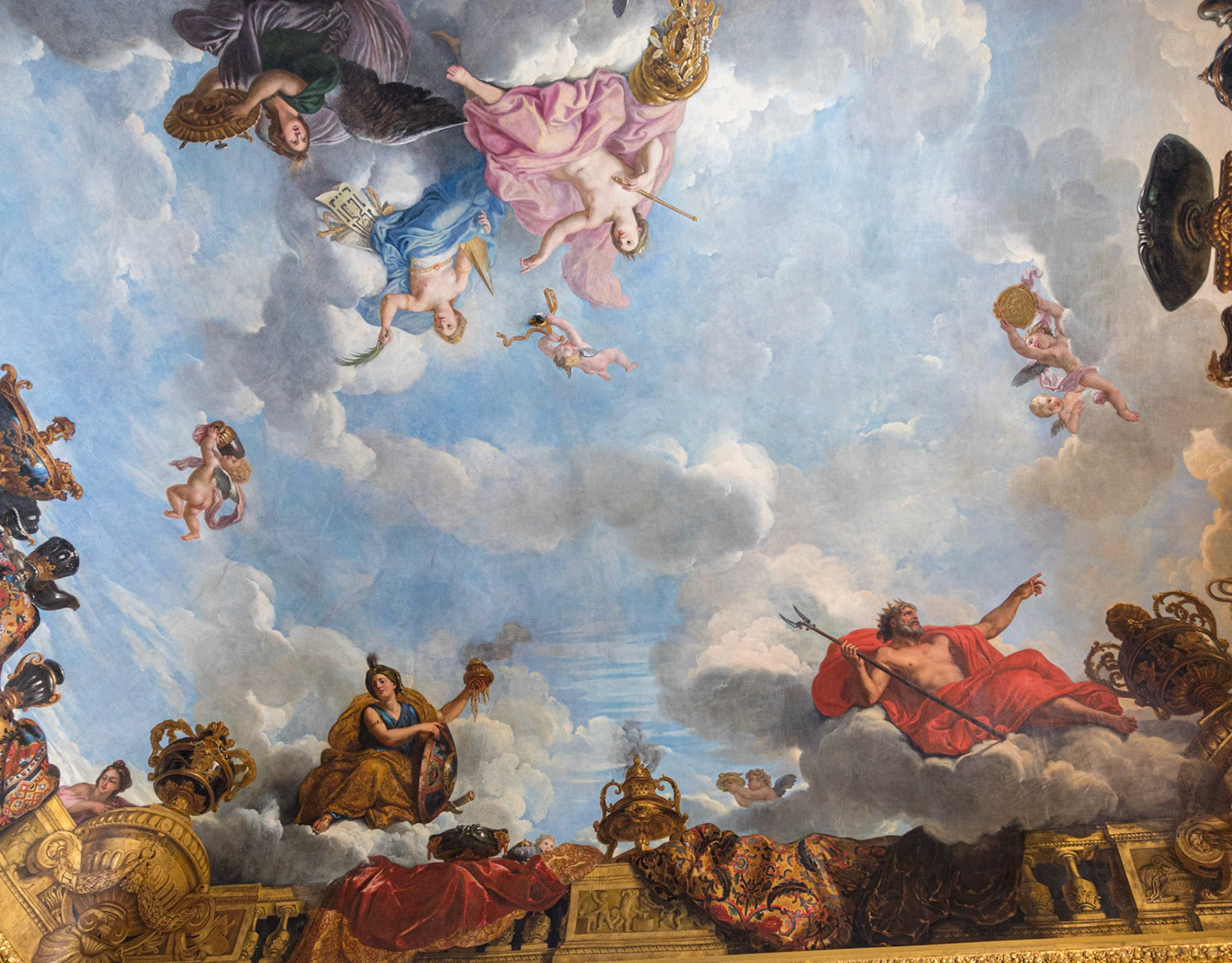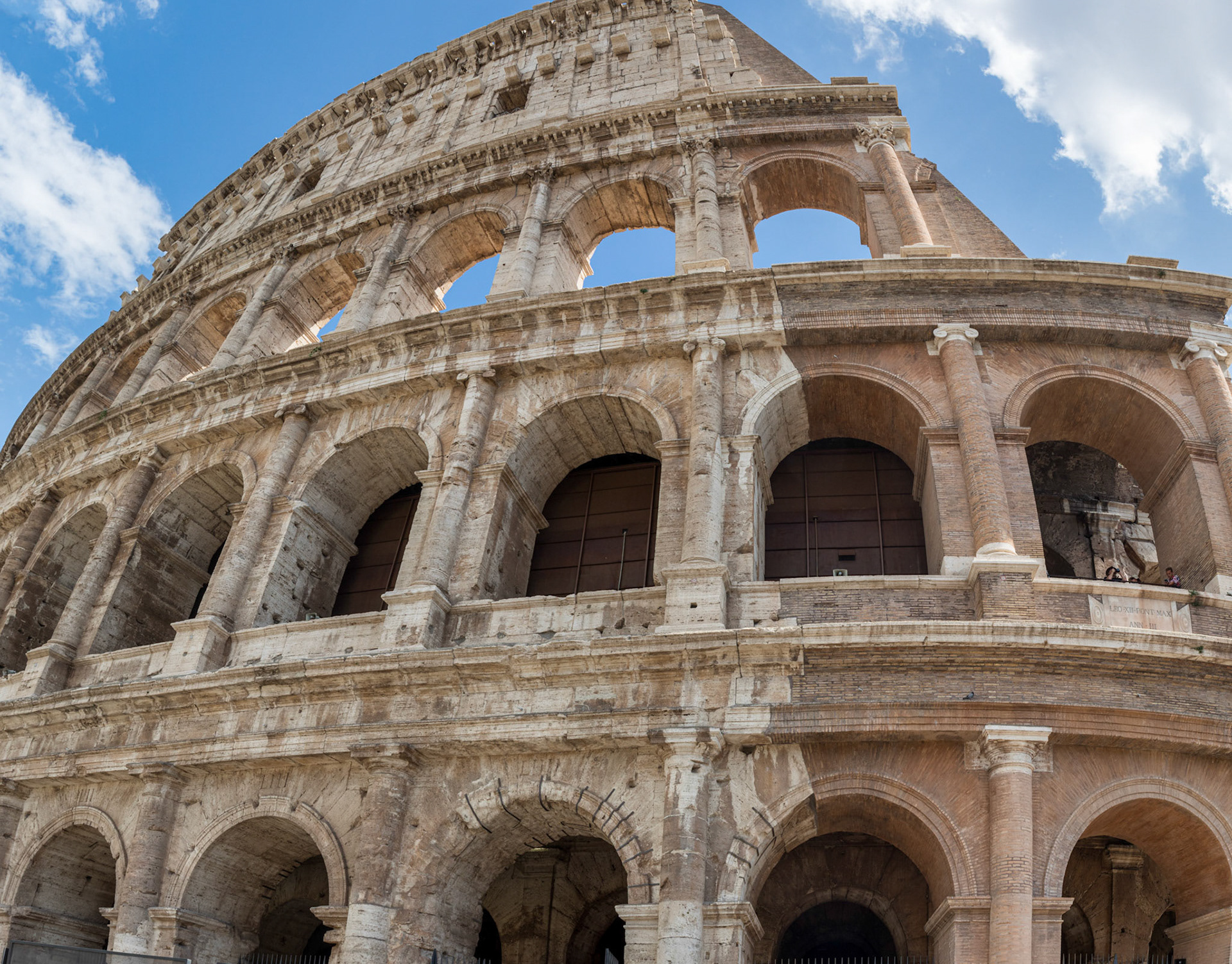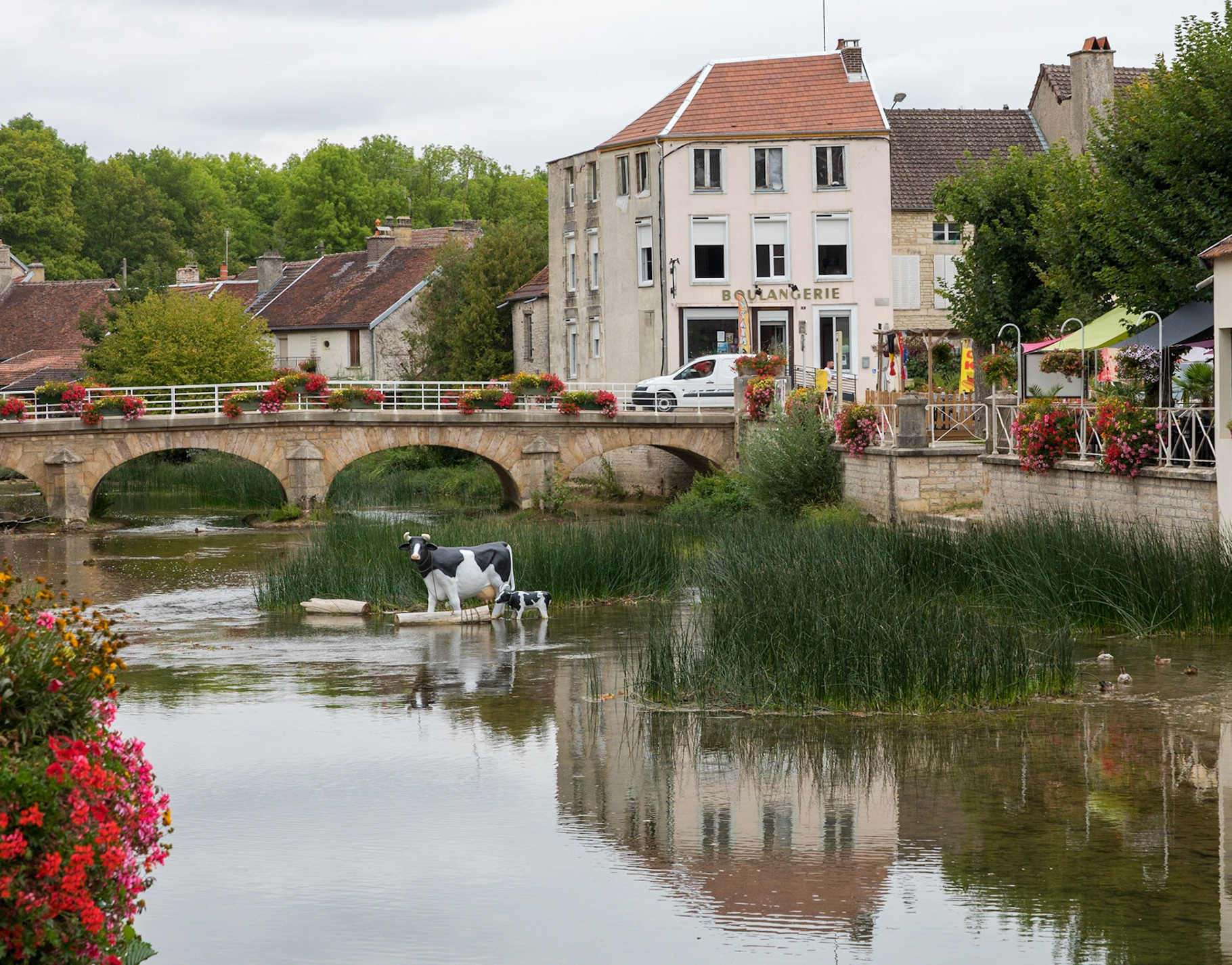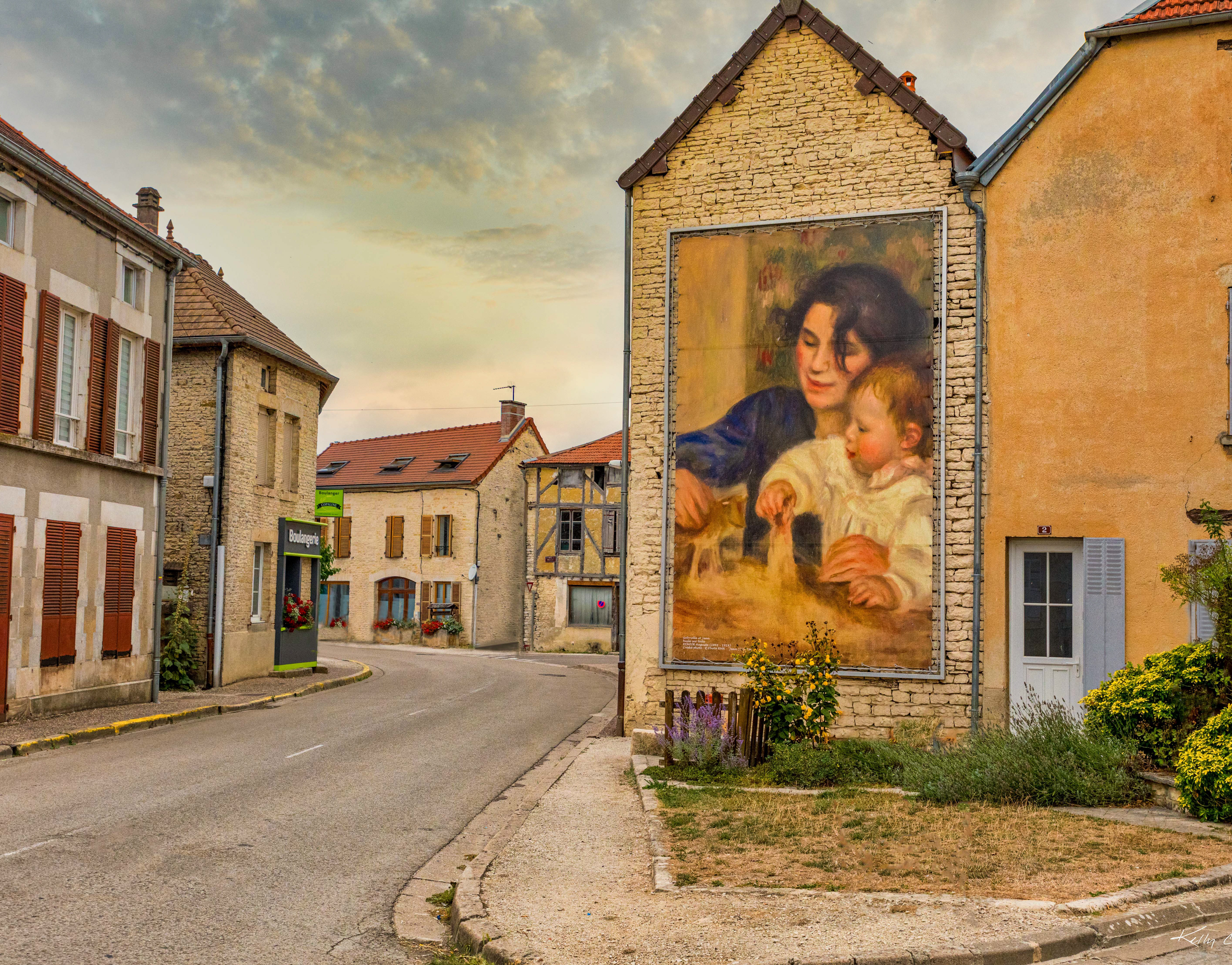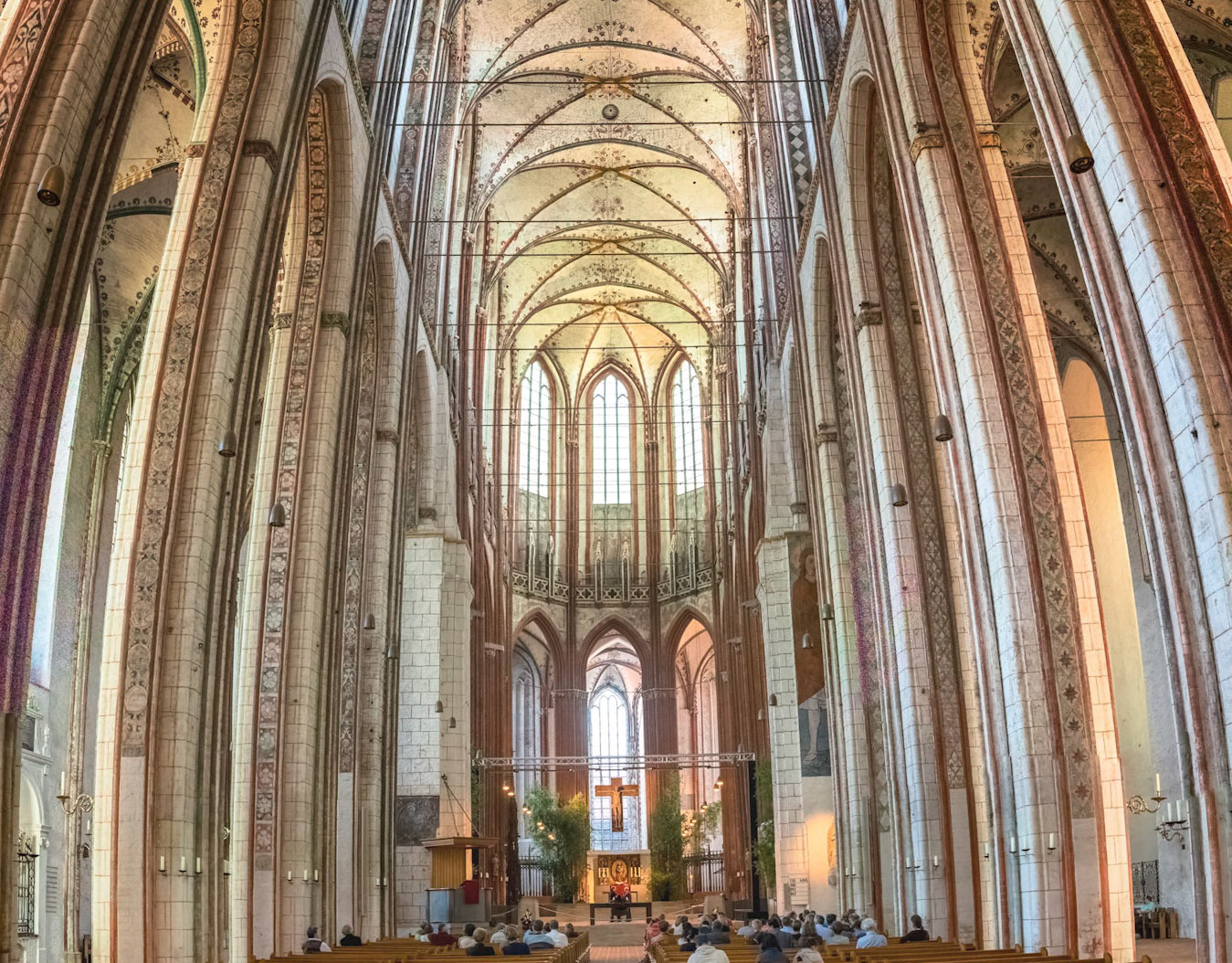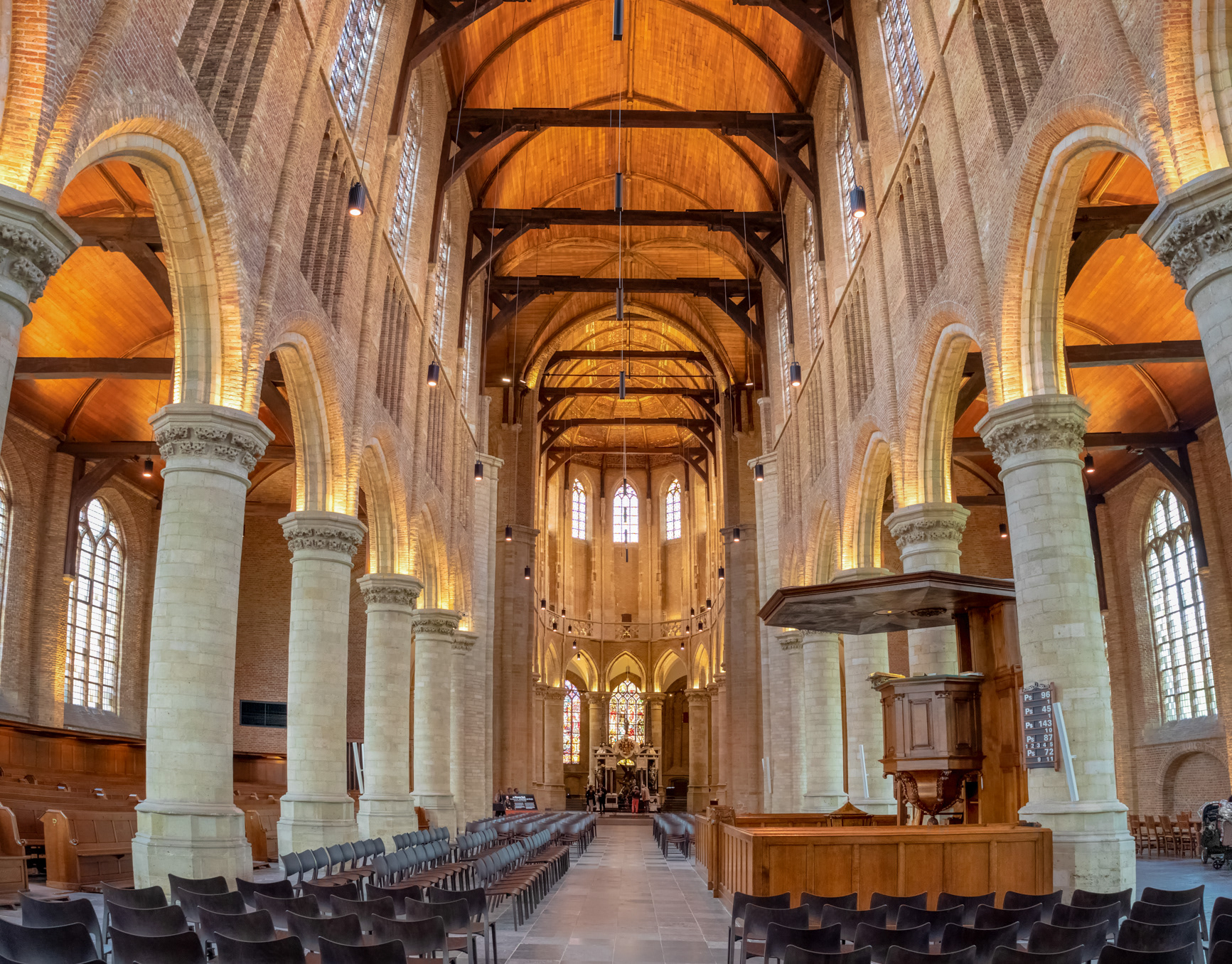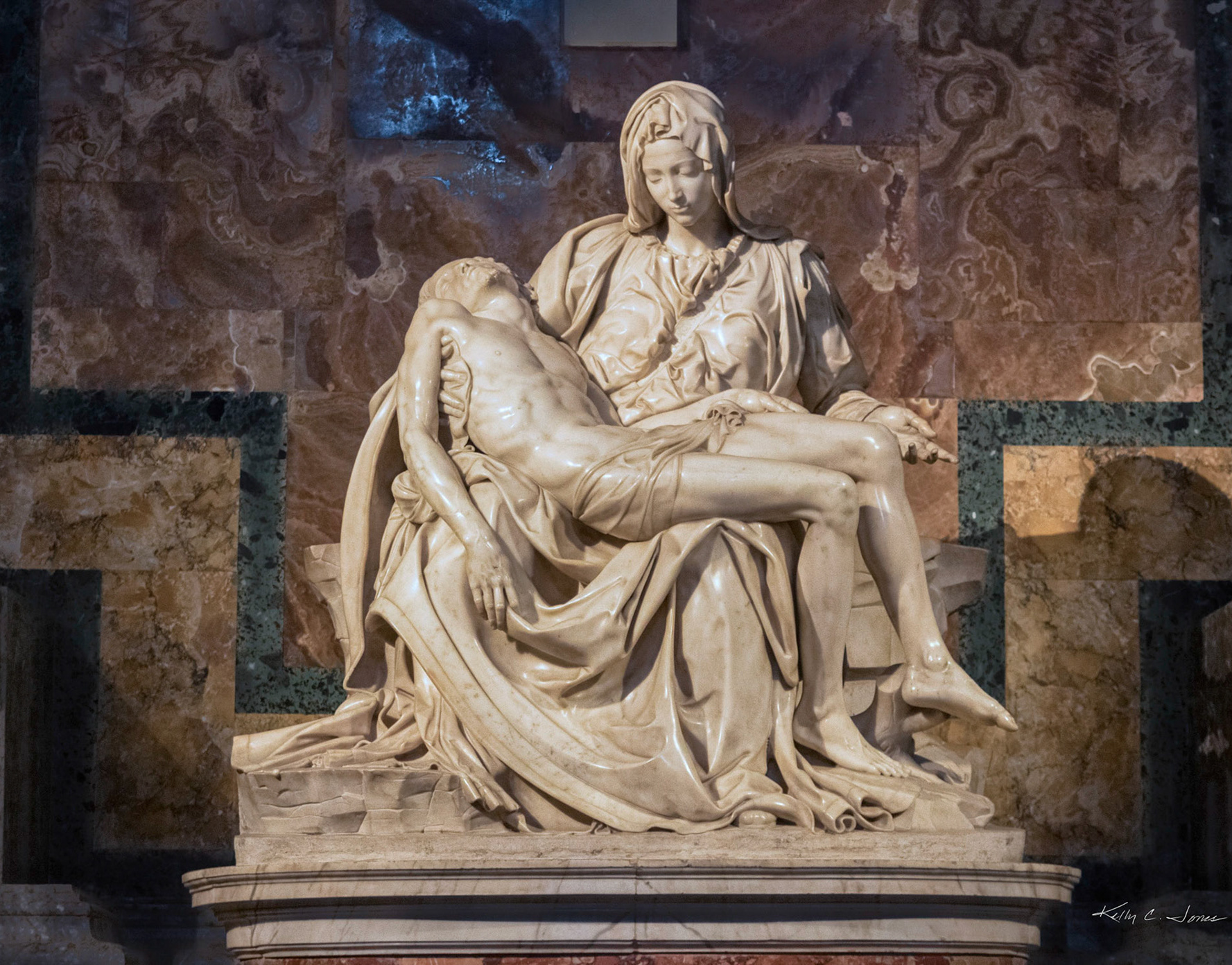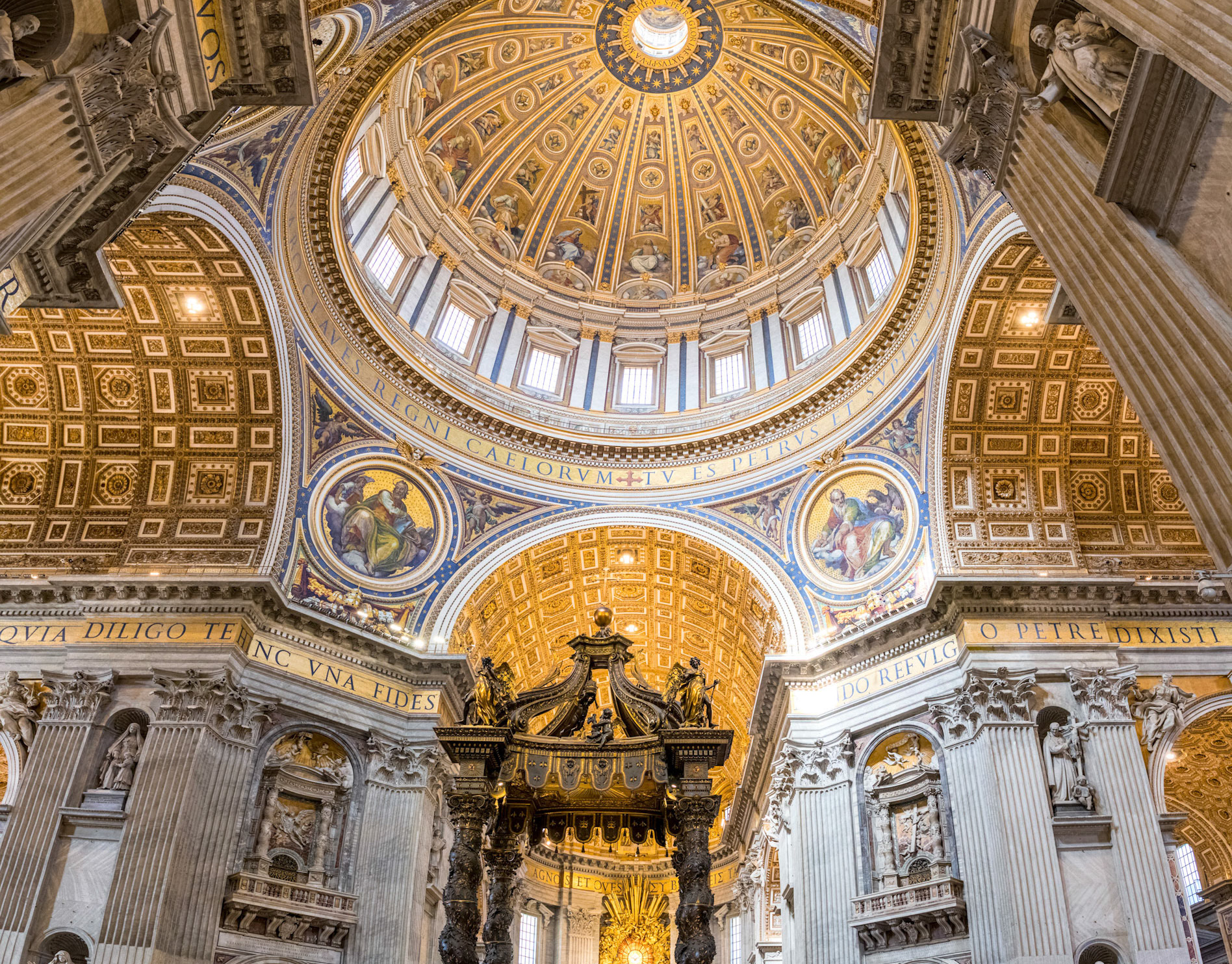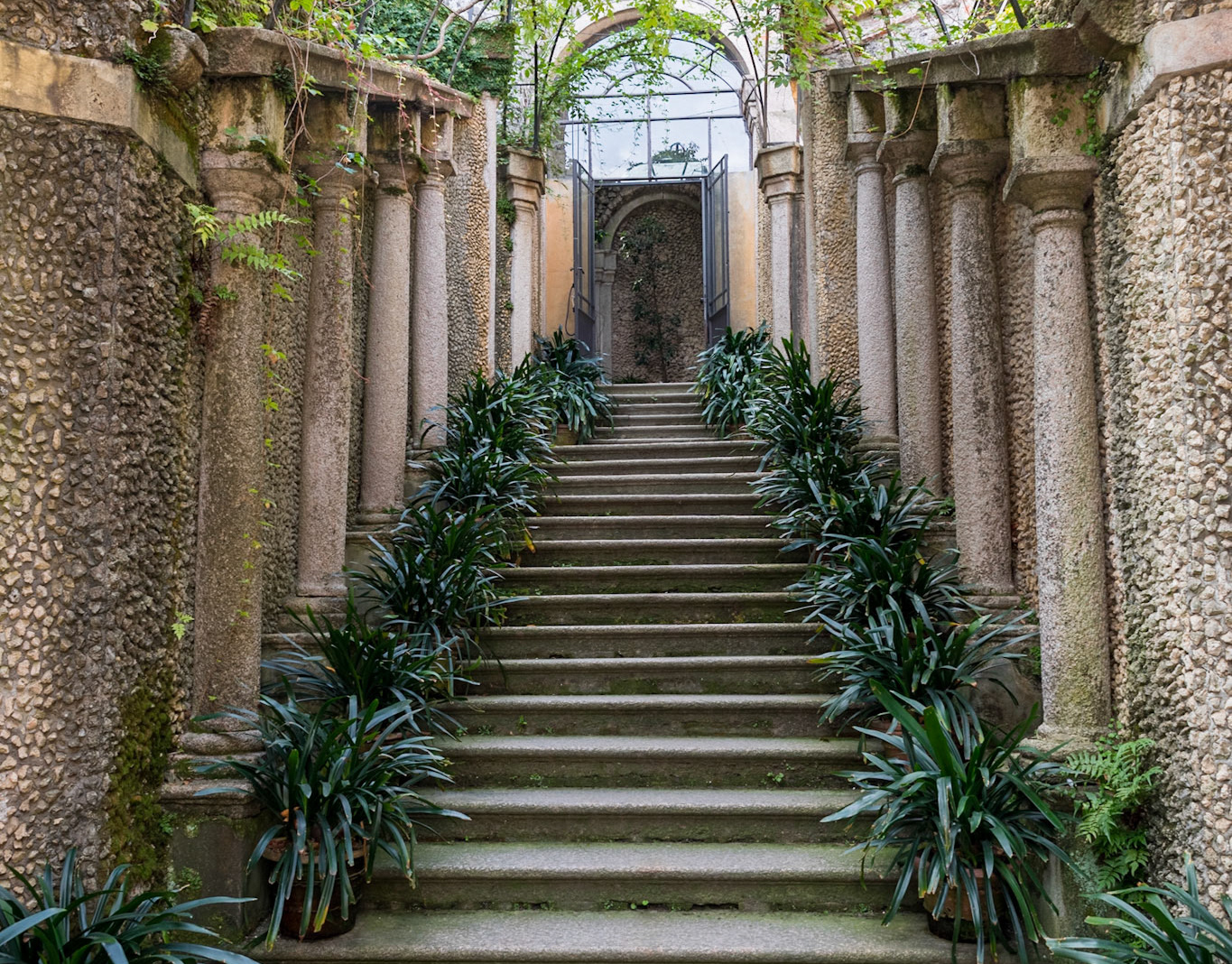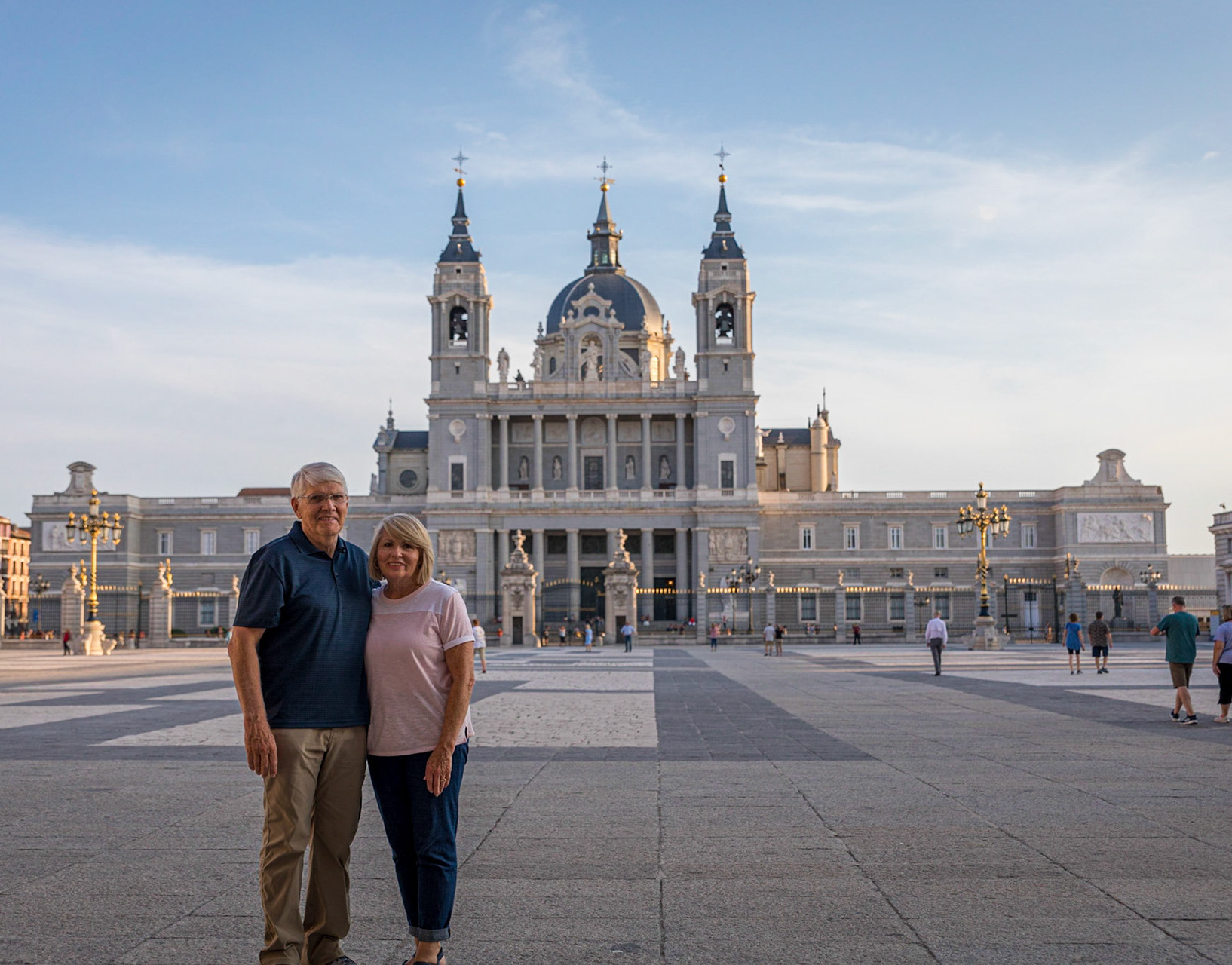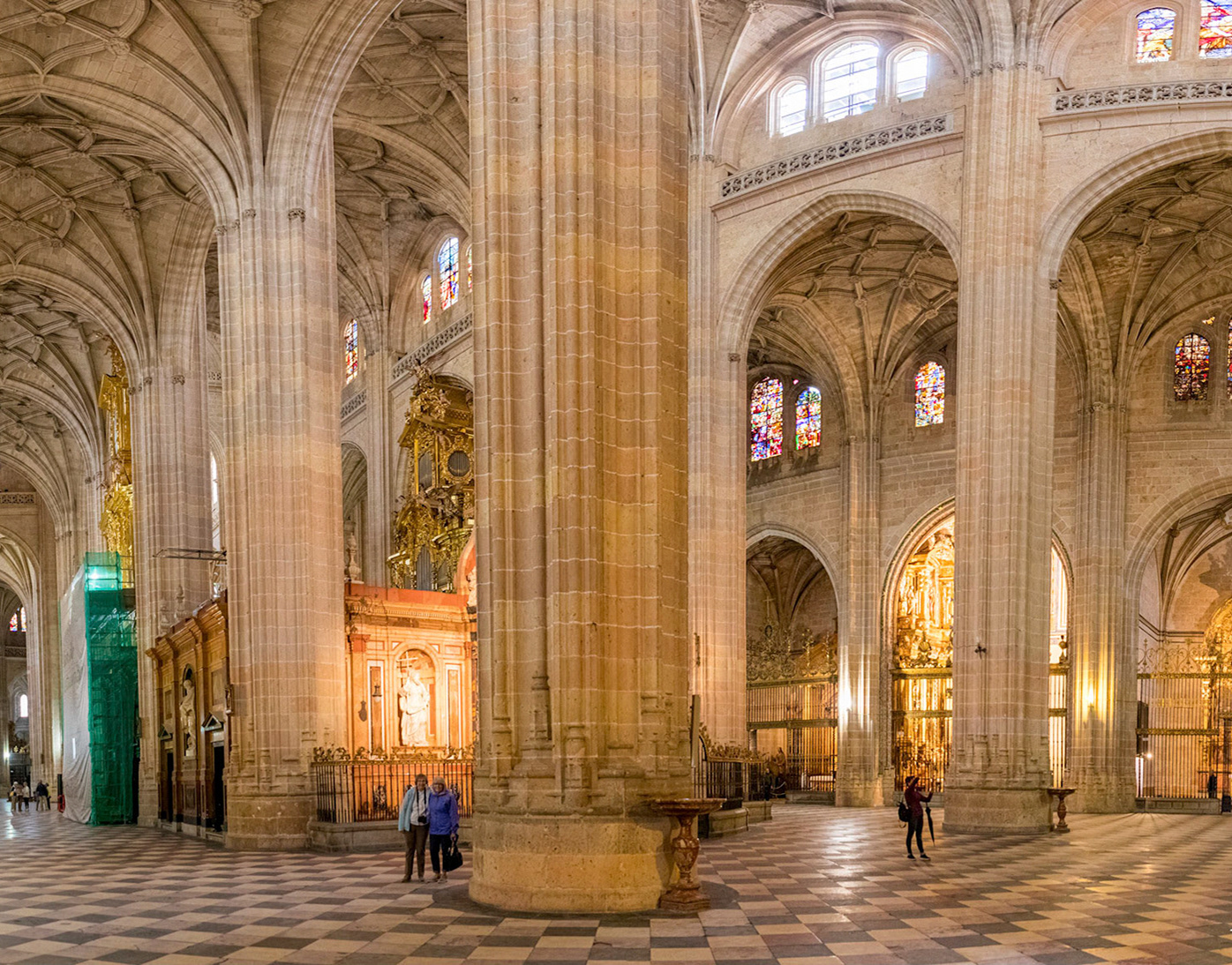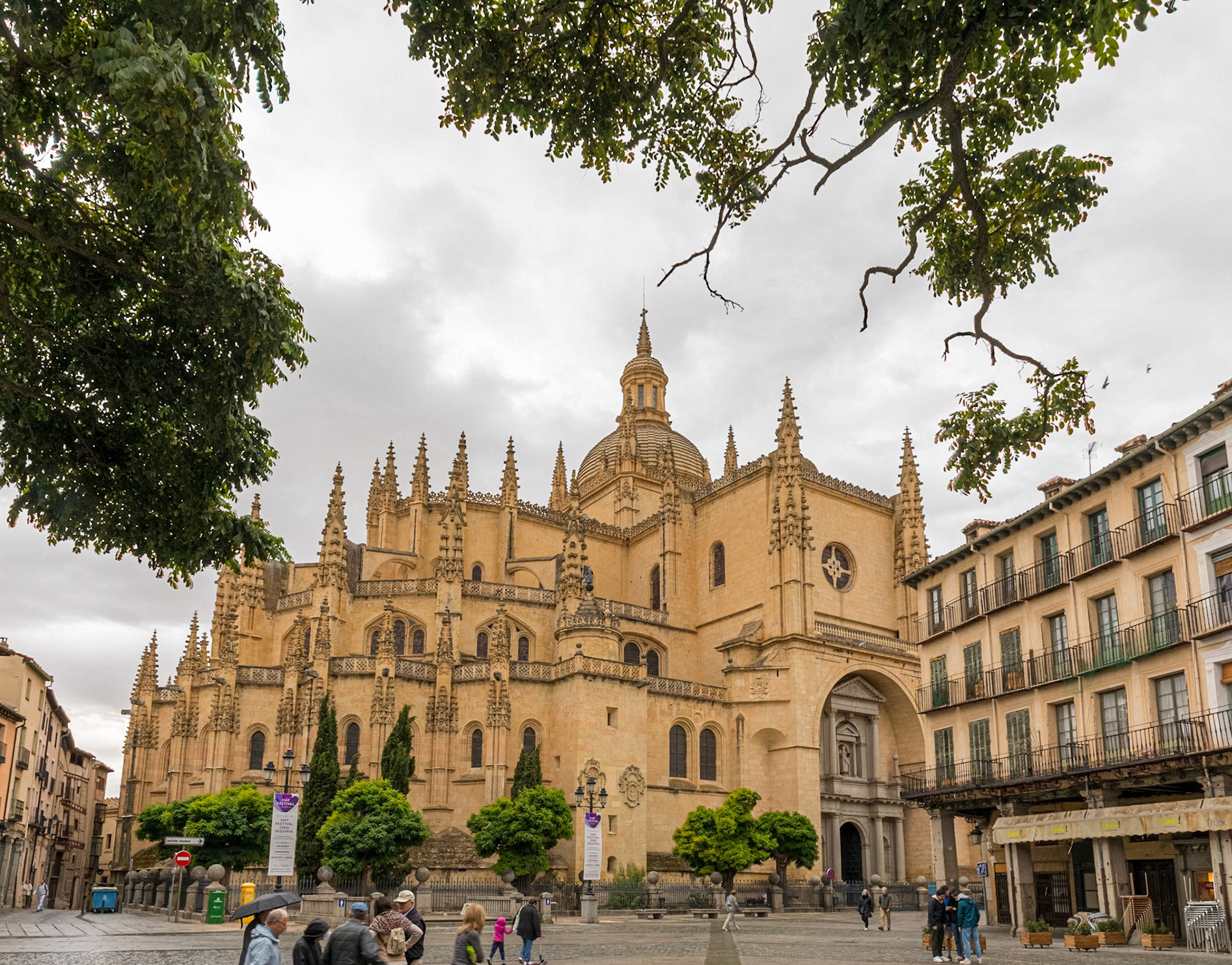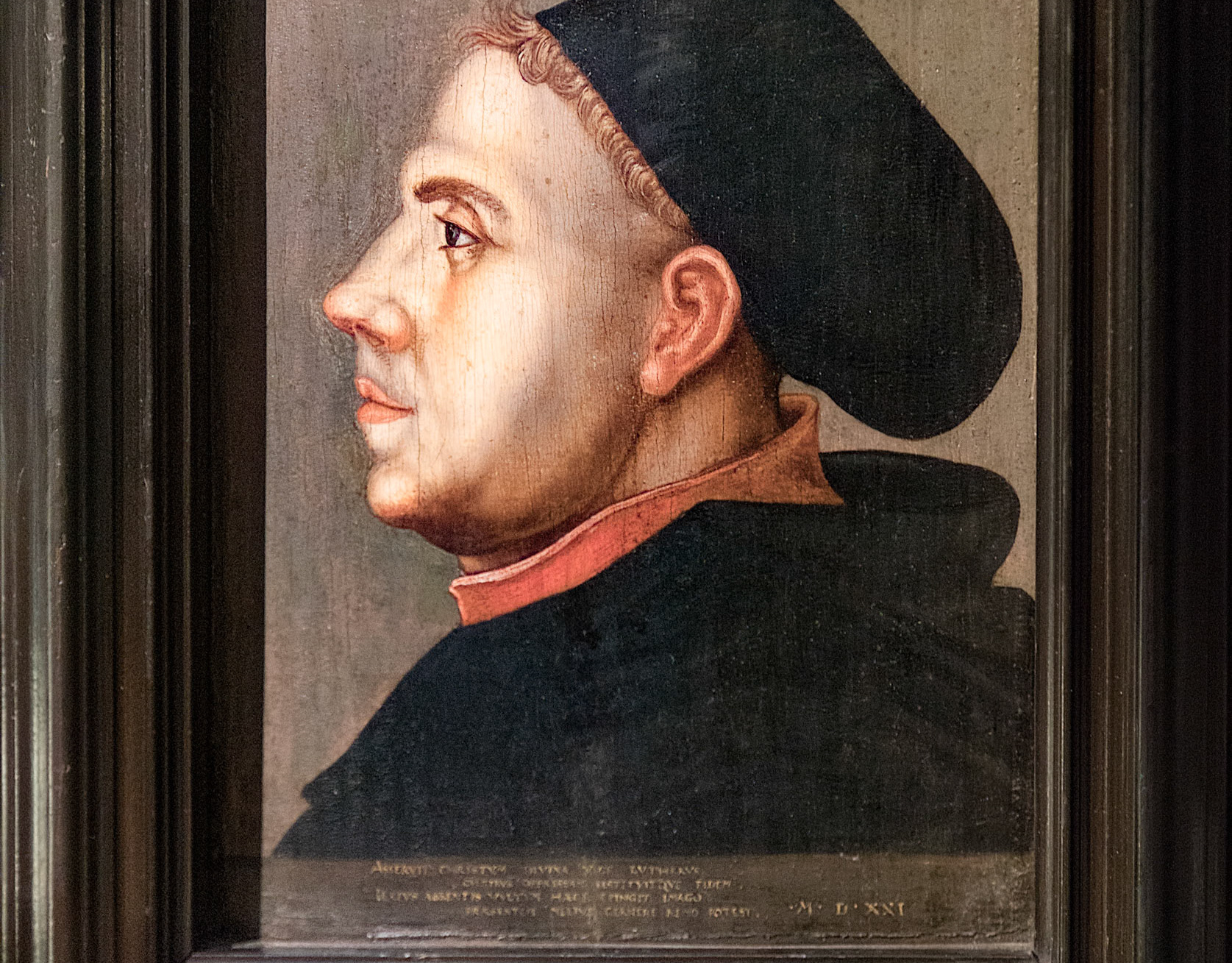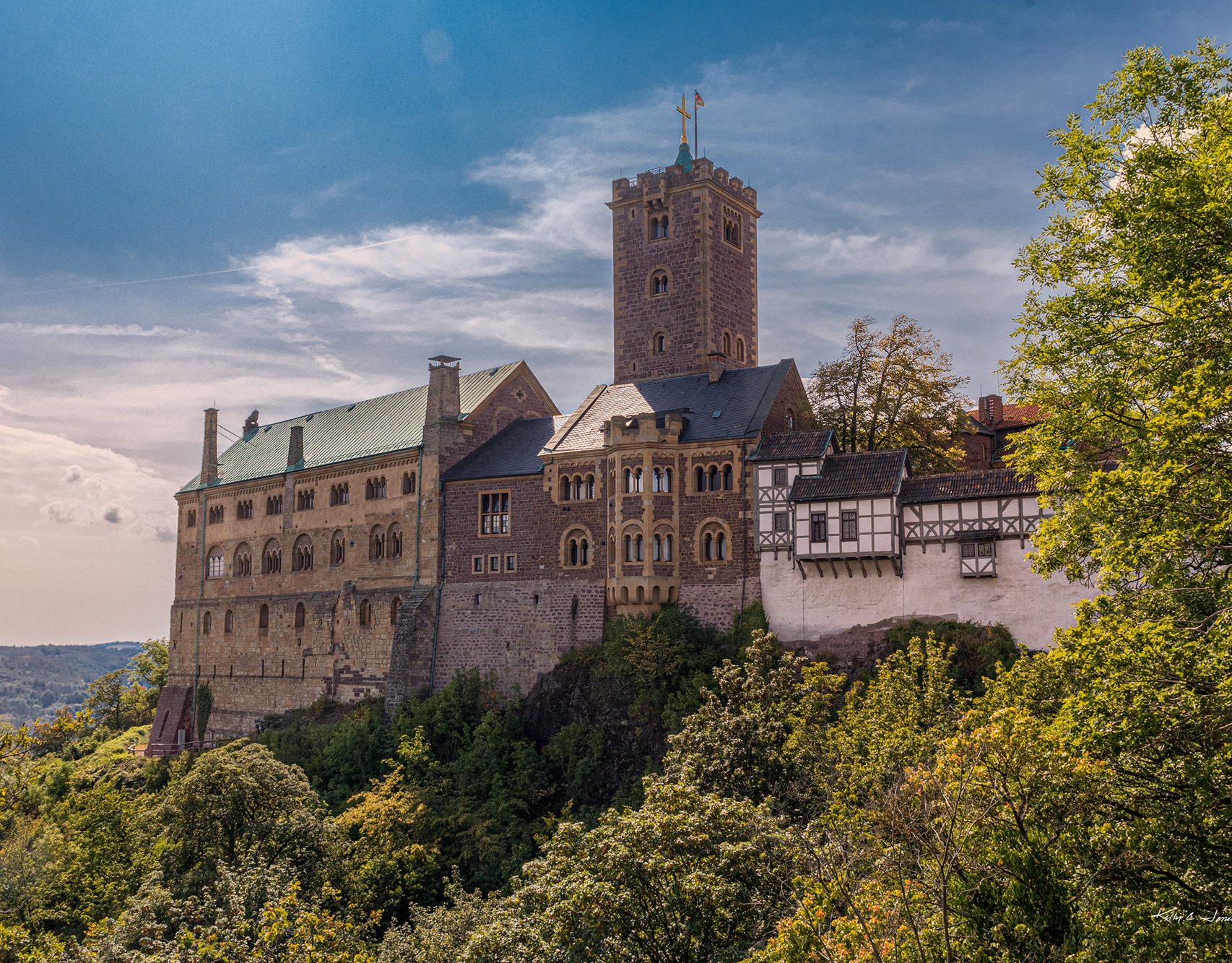The Toledo Cathedral- showing some exterior renovation. It was begun in 1226 under the rule of Ferdinand III. The last Gothic contributions were made in the 15th century when, in 1493, the vaults of the central nave were finished
Looking vertically into opening into the skylight.
One of the most outstanding features of the Cathedral is the Baroque altarpiece called El Transparente. Its name refers to the unique illumination provided by a large skylight cut very high up into the thick wall across the ambulatory behind the high altar, and another hole cut into the back of the altarpiece itself to allow shafts of sunlight to strike the tabernacle.
The most important object kept in the Chapel of the Treasure is the great Monstrance of Arfe, also known as La Gran Ostensoria de Toledo. Arfe labored on it from 1517–1524, on commission to Cardinal Cisneros. It is of late Gothic design. This triumph of the silversmith's craft is in the form of a Gothic temple, with all the architectural details, such as columns, arches, and vaultings, the whole resembling a delicate lacework. Scenes from the life of the Saviour are illustrated in relief. It has two hundred and sixty statuettes of various sizes, all exhibiting the same skill in workmanship. The monstrance comprises 5,600 different pieces held together by 12,500 bolts and decorated with 260 figurines. Eighteen kilograms (39.7 pounds) of 18 karat gold and 183 kilograms (403 pounds) of pure silver were used in its fabrication; it is said to contain the first gold brought by Columbus from the New World.
The Great Monstrance has a hexagonal base, and rises on small exquisitely made columns, with adornments of gems and varied figurines of angels and saints, fleurons, small bells and clappers. The work is crowned in the uppermost section by a 17th-century cross. The pedestal on which it sits is in the Baroque style of the 18th century. Originally made of silver, Archbishop Quiroga commissioned its gilding to match the gold plated wood of the monstrance of the altar; it was gilded in 1595 by Valdivieso and Morino. Today it is encased under bulletproof glass and heavily guarded by an automatic security system within the grounds of the cathedral.
Vertical panorama -- The Disrobing of Christ is a painting by El Greco begun in the summer of 1577 and completed in the spring of 1579 for the High Altar of the sacristy of the Cathedral of Toledo, where it still normally hangs. It is one of El Greco's most famous works. A document dated July 2, 1577 which refers to this painting is the earliest record of El Greco's presence in Spain. Note the ornate ceiling painting.
The painting shows Christ looking up to Heaven with an expression of serenity; His idealized figure seems segregated from the other people and the violence surrounding him. A figure dressed in black in the background points at Christ accusingly, while two others argue over who will have His garments. A man in green to Christ's left holds Him firmly with a rope and is about to rip off His robe in preparation for his crucifixion. At the lower right, a man in yellow bends over the cross and drills a hole to facilitate the insertion of a nail to be driven through Christ's feet. The radiant face of the Savior is violently juxtaposed to the coarse figures of the executioners, who are amassed around Him creating an impression of disturbance with their movements, their gestures and lances. In the left foreground, the three Marys contemplate the scene with distress.
The retable of the Cathedral of Toledo is an extremely florid Gothic altarpiece; it is one of the last examples of this artistic style, which was disappearing as the Renaissance began to take hold in Spain. Commissioned by Cardinal Cisneros, the work was begun in 1497 and finished in 1504. Among the architects, painters and sculptors who collaborated in this collective masterwork were: Enrique Egas and Pedro Gumiel (design), Francisco de Amberes and Juan de Borgoña (estofado: the technique of finishing sculpture of wood with gilding and punched patterns, and polychromy), Rodrigo Alemán, Felipe Vigarny, Diego Copín de Holanda y Sebastián de Almonacid (religious images), and Joan Peti (carving and filigree).[14]
The retable rises to a great height above the altar; it includes an important statuary and a magnificent, delicate filigree of balusters, spires, small dossals, and chambranles, all done by Joan Peti. It consists of five continuous panels, the center panel being the widest; it is five storeys tall, and the lines of separation are stair-stepped. The themes of the central panel from bottom to top are: the figure of a seated Virgin and Child plated in silver on the predella, above this the tabernacle and a Gothic monstrance carved in wood, then a depiction of the Nativity, and above that, the Ascension. The whole culminates in a monumental scene of Christ's crucifixion at Calvary. Further themes of the life and passion of Jesus are represented on the other panels.
The main chapel. -- The cathedral is also illuminated through more than 750 stained glass windows from the 14th, 15th and 16th centuries, the work of some of the greatest masters of the times.
Vaulted ceiling, high altar, and reja of the main chapel
The whole sanctuary is covered with carved and chiseled mythological figures of all sizes.
The Santa Maria Synagogue - was built in 1180. It has five naves separated by pillars supporting horseshoe arches. In the 15th century it was converted into a church, although today it is simply a monument which is open to visitors.
Not sure what this is all about, but he was doing his act as we passed by.
